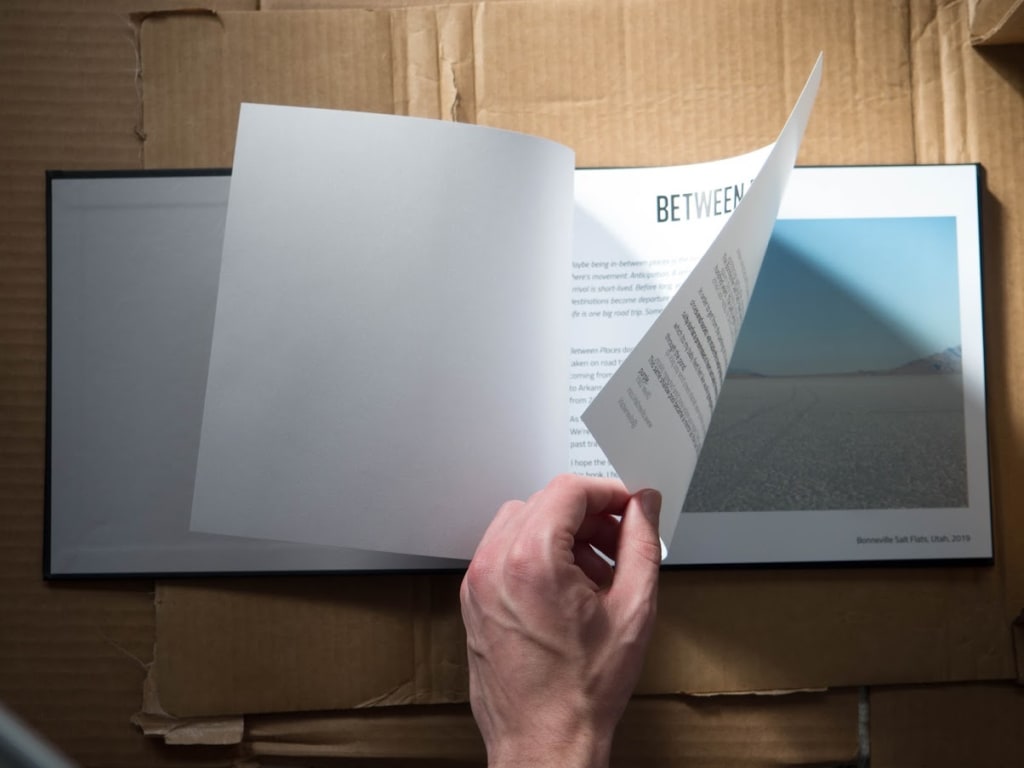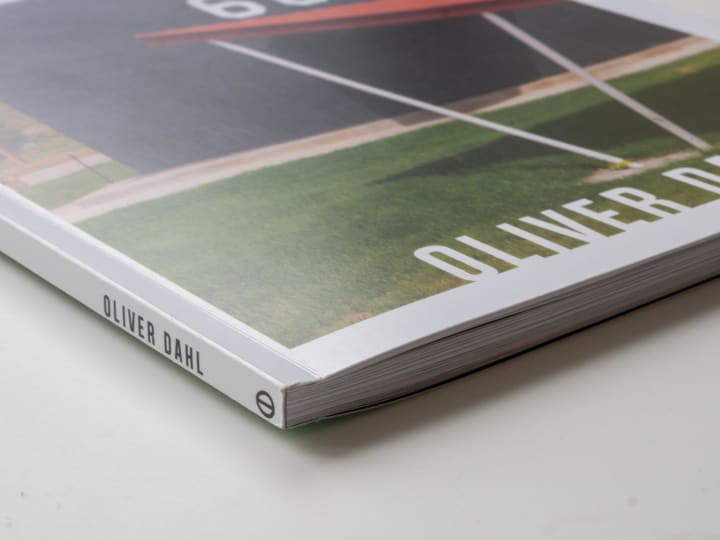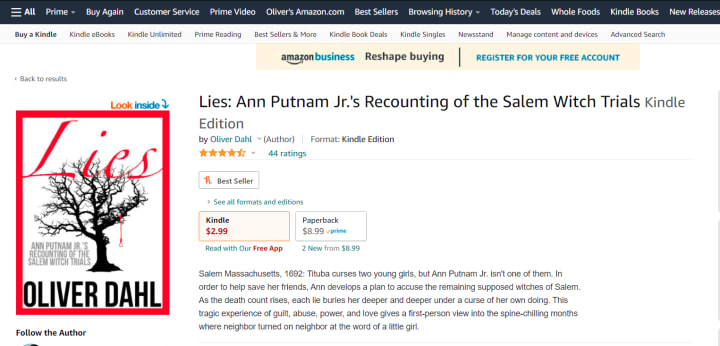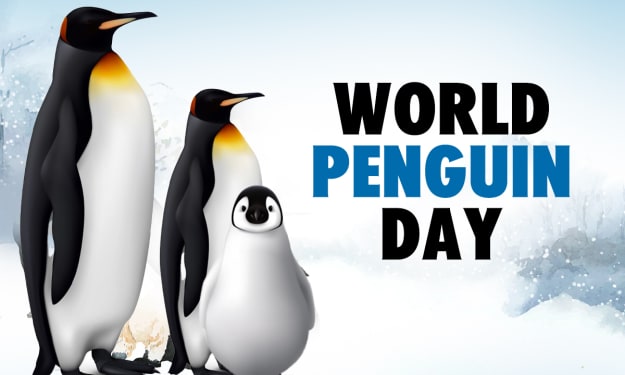How to Self-Publish Your Book (the RIGHT way)
Self-Publishing: A Brief History, its Problems, & How to do it Right

Are you trying to publish a book? Have you dreamed of becoming a published author? Self-publishing makes that easier than ever before, but with great power comes great responsibility.
I've already published a post about how to make a photography zine from start to finish. In this post, I want to focus more specifically on the world of publishing the written word.
My own journey with self-publishing began in 2011--almost an entire decade ago. What's even crazier is that I was actually 13 at the time I published my first book. Since then, I've self-published two more novels and two photo books. Staying up to date on the latest self-publishing trends and opportunities (including right here on vocal.media!) has become a passion of mine. I'm excited to share with you some of what I've learned about self-publishing over the last 10 years.
Some Context
The introduction of the internet has disrupted countless industries--and created countless more. Included in these disruptions is the way that it has forever changed how we tell, share, and distribute stories. The self-publishing industry has brought with it far-reaching benefits, changes, and problems. These changes haven’t stopped, either. The industry is still new and still growing.
Increasing numbers of self-published books are ranking on Amazon and even New York Times Bestseller Lists. It’s easy to be drawn in by the simplicity of the process, the creative control, and the significant royalty rates (compared to traditional publishers). But behind the glitter and the gold is a history and a process that can’t be neglected. To avoid contributing to an oversaturated market, and to maximize success as an independent author, it is essential to self-publish responsibly.
A Brief History of Self-Publishing
The first online Print on Demand (POD) self-publishing company started in 1997, although self-publishing itself wasn’t necessarily a new idea. Martin Luther, Jane Austen, Emily Dickinson, Walt Whitman, and many others had “self-published” before, by either starting their own presses, or paying out of pocket for a press to print copies of their books (1).

With the introduction of POD publishing, books can be printed each time a book is ordered, rather than printing a number of thousands of copies to have in stock or inventory until they sell. This quickly became an attractive option for writers wanting to self-publish, but who were unable to afford the typical route of ordering hundreds to thousands of copies at a time, hoping they sell, and keeping inventory. Of course, this route also comes with other benefits, like higher royalties, more creative control, and (for better or worse) the lack of a “gatekeeper” agent, editor, or publishing house deciding whether or not a book is fit for publishing.
In the early 2000s, interest in self-publishing grew in communities of writers in real life and in the early blogosphere. People increasingly began to see it as a viable way to achieve the title of “published author,” and as a result, the number of self-published titles began to steadily grow.
The eBook Revolution
As if the self-publishing revolution wasn’t enough, another industry-changing innovation took the world by storm: the widespread growth of eBooks. This added fuel to the fire, a fire that is still burning today. One that has left far-reaching impacts on Amazon, the publishing industry, and how we consume stories. In 2005, Amazon purchased CreateSpace, the largest POD publishing company at the time. Then, in 2007, they introduced the Kindle eReader, and with it, the means to publish books on it. They went on to publish over a million more titles in 2018 than the next-highest producing publisher, (another self-publishing company) Smashwords (2).

Ironically enough, these massive changes to the book publishing industry have come in a time where people are spending less money year after year on books (3). This, coupled with a nearly exponential growth of self-published titles being released each year (4) makes for a unique dilemma. The median income for US authors has been on a steady (and steep) decline between 2007 and 2017 (5).
The Problems with Self-Publishing
Self-publishing allows anyone and everyone the opportunity to publish their work. This can and ought to be a good thing--for the competitive marketplace, for readers everywhere, and for a society advocating free speech. However, irresponsible authors have given self-publishing a bad name (6).

An example from early last year occurred as the Coronavirus began to quickly spread throughout the world. Entrepreneurial writers ("authorpreneurs") took to Amazon to cash in with (often plagiarized) guides on everything from prevention tips to making your own hand sanitizer (7). Because self-publishing can be about as easy as uploading a picture to Facebook, the quality of these books often suffers.
Traditional publishing houses provide an array of services authors are unlikely to have on their own without hiring outside help. Professional content and copy editors, formatters, and cover designers are responsible for making a traditionally published book the best it can be--in every detail. When self-publishing, some authors decide to wear these hats themselves. The problem is that these hats are worn with varying effectiveness from author to author.

How to Self-Publish (The Right Way)
To take full advantage of the opportunity self-publishing a book provides, I recommend hiring these hats out. I took a very bare-bones approach when self-publishing my books. I felt confident in my ability to design a consistent format in Microsoft Word that would look professional when printed as a book. I also spent countless hours drafting book covers and tweaking details to make them look as professional as possible. I outsourced editing to a group of volunteers, and hired someone with more experience and software to format the text into various eBook formats. This last step was practically the only thing I had to spend money on--and cost around $30.

For writers with less experience in formatting and cover design, or who don’t yet have a community willing to help edit their books, hiring these tasks out is essential if they want their books to match traditionally published quality. There are hundreds of capable and willing freelancers out there. Copyediting and cover design will likely be the most expensive steps, but could reasonably be done (extremely well) for less than $1000 altogether. Just as an indie musician has to pay out-of-pocket to mix their songs, if independent authors want to compete with traditionally published books, and create a positive impression on their readers, some investment is going to be necessary.
When these investments and efforts to create quality content are not made, it contributes to the saturation of the market, the devaluing of stories, and the “bad rap” that self-publishing still sometimes gets. On the other hand, there are so many benefits to taking these necessary steps to ensure a manuscript matches the quality of a traditionally published book in every way.
When you’ve written a story you’re proud of, it deserves to be presented to the world in a way that you can be proud of, too. And besides, no matter how many times we hear the adage to “not judge a book by its cover,” people still do.

Following is a self-publishing "checklist" based off of the general process I followed in preparing my books for publication. By adapting it to your own situation and carefully researching your options and alternatives, the investments you make in your book will pay off in the quality your story deserves. I won’t be surprised when we see many other “big-name” authors embrace the self-publishing approach when they realize the benefits it provides. These same authors understand the importance of presentation, and know the amount of effort required to turn a manuscript into a bestselling book. We haven’t heard the last of self-publishing. It’s not done evolving yet. It’s up to writers everywhere to responsibly use this opportunity to share brilliant stories in a professional way to a growing and increasingly accessible audience.
The Checklist
Congratulations! Finishing a manuscript is hard work, and an accomplishment to be proud of. Way to go!
1. Now it’s time to make sure that your manuscript shines! Take some time away from it, and then come back to it. Edit, revise, and rewrite like mad. Then edit it some more. Repeat as needed.

2. Next up, let’s find some beta readers. These are people in your book’s target demographic, who will be willing to give you some general feedback about the story. I found beta readers by following book bloggers, etc. who appeared to be in my target demographic on Twitter, and then reaching out to those who expressed interest in my writing. Treat their feedback like the treasure it is! Did they like it? Did it make sense? This is where things get exciting. Your story is leaving the nest.
3. After making any necessary changes or adjustments that your beta readers suggest, check to make sure you’re still passionate about the story. You are? Great. Now let’s send it to some editors. I found mine the same way as I found my beta readers. Be clear with them as to what kind of edits you are wanting.
4. So now you have a polished manuscript that people actually enjoy! If you’re not at least a little bit tired of this book by now, you might need to do some more editing.

5. The next step that I took at this point was to format the book--picking a page size, adding consistent chapter headings, page breaks, page numbers, title pages, and the frontmatter you see at the beginning of other books. Format your manuscript to look like a book. If that’s not up your alley, book formatting is one of the more inexpensive things freelancers are willing to do for you.
6. At this point, you can also find someone to format your manuscript into different eBook formats. The Amazon Kindle has its own format, but most other eReaders use the “ePub” file format. This step depends on the length of your book and complexity of the formatting you want, but can typically be done for $50 or less--including all of the formats you might need.
7. Now you can put together a cover. Because the manuscript is final and formatted, you know exactly how many pages it will be when it is printed. This helps your cover designer (or you, if you have graphic design experience you plan to use) know exactly how wide the spine of your book will be. They (or you, through Amazon’s cover designing program or another program of your choice) will create a “wrap” for your book--one image file that includes the back cover, spine, and front cover. This wrap will be printed around the pages of your book and make an attractive cover.

8. Whichever self-publishing company you decide on will have some differences from the others, but by and large, this is the easiest part. Upload your manuscript and cover files, fill in some information about the book (like the title, subtitle, your name, number of pages, a summary, your bio, etc.) and then look at the “Publish button.” But don’t push it yet.
9. Order a “Proof Copy.” A proof copy is essentially a test print of what your book will look like if someone were to order one. Ordering a proof doesn’t publish the book, but gives you an opportunity to make sure that the cover, formatting, and all of your hard work have paid off and look nice. You still have time to make some changes and corrections, if needed. Receiving the proof copy in the mail is one of the most rewarding moments of the whole process. Seeing your name on the cover of a book is an incredible feeling.

10. If everything looks good, we can go back to that “publish” button. Go on, click it. You’ve worked hard for this. You can be proud of what you’ve written and created. Within the next few hours to days, your book will be live on Amazon! Congratulations!

I hope this post has been helpful to you! Feel free to reach out to me with any questions you might have about the self-publishing process. I'm happy to help other creators find their place in the world of publishing.
If you've enjoyed the post, please consider leaving a tip and checking out my other posts. Thanks!
================
References
1 - Patterson, Christina. “How the Great Writers Published Themselves.” The Independent. Independent Digital News and Media, August 17, 2012.
2 - Bowker, und Website (actualitte.com). "Largest self-publishing companies in the United States in 2018, by number of titles published." Chart. August 28, 2019. Statista. Accessed March 13, 2020.
3 - Bureau of Labor Statistics. "Average annual expenditure on books per consumer unit in the United States from 2007 to 2018, by type (in U.S. dollars)." Chart. August 29, 2019. Statista. Accessed March 13, 2020.
4 - Bowker, und Website (actualitte.com). "Number of International Standard Book Numbers (ISBNs) assigned to self-published books in the United States from 2010 to 2018." Chart. August 28, 2019. Statista. Accessed March 13, 2020.
5 - McCarthy, Niall. "U.S. Authors Suffer Drastic Decline In Earnings." Digital image. January 10, 2019. Accessed March 04, 2020.
6 - See lousybookcovers.com for thousands of examples.
7 - In recent news, see this article.
About the Creator
Oliver Dahl
Oliver Dahl is a published author and photographer from Boise, Idaho.
He currently studies marketing at Brigham Young University.
Website: www.oliverdahl.com
Instagram: @OliverWDahl






Comments
There are no comments for this story
Be the first to respond and start the conversation.